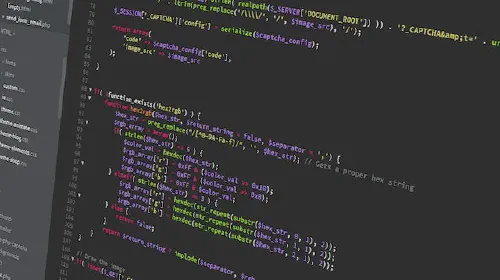What is the Blockchain Trilemma and Can it be Solved?
Salomon Kisters
Dec 19, 2022This post may contain affiliate links. If you use these links to buy something we may earn a commission. Thanks!
Blockchain and decentralized ledger technology have certainly brought many innovations in several fields, especially business and finance. This technology has completely changed the way we think about our current financial system.
However, it also faces several challenges that can hinder its widespread adoption. The most important of these problems is the blockchain trilemma.
This article will dive deep into the blockchain trilemma and see how different projects attempt to solve it.
What is the Blockchain Trilemma?
Simply put, blockchain trilemma refers to the problem that it is impossible to achieve security, decentralization, and scalability in a single blockchain network without compromising on one of the three features. Though the first blockchain was invented just fourteen years ago, the history of this problem goes back a couple of decades.
In the 1980s, for instance, a computer scientist, Eric A. Brewer, presented a theorem called the CAP theorem or Brewer’s theorem, highlighting the challenges faced by distributed networks. According to this proposition, decentralized technologies can only ever ensure two of the three qualities at any given time: consistency, availability, and partition tolerance (CAP).
Today, the CAP theorem is commonly referred to as the blockchain trilemma, which states that public blockchains must compromise either on security, scalability, or decentralization to work. Such networks have to manage a large number of nodes to achieve system consensus while maintaining transparency and quick functioning without sacrificing security.
For instance, Bitcoin is the most popular public blockchain and is widely considered a highly secure and decentralized network. However, the blockchain can process only seven transactions every second. Meanwhile, centralized networks, such as Visa, are capable of completing as many as 24,000 transactions in the same duration.
Similarly, blockchain projects like Hyperledger Fabric are incredibly fast and offer top-notch security, but the network comprises a very limited number of nodes, which makes it inherently centralized.
Projects like Solana use the unique Proof-of-History consensus mechanism to ensure fast transaction speed and decentralization but at the risk of low security. As a result, the blockchain has faced several breaches and cyber-attacks from time to time.
Decentralization
A network being decentralized means it is not owned or controlled by any centralized authority. Instead, the entire network is owned and operated by the users themselves. All administrative and development decisions are, therefore, made through a general network consensus.
Decentralization is the most prominent feature of cryptocurrency blockchains today, making them more appealing to users when compared to fiat currencies. All fiat currencies are controlled by governments and banks.
This means that your money is at the mercy of those institutions. You have no say in the decisions made regarding your funds or the supply and circulation of money in the economy. In many cases, these decisions can prove harmful to the interests of the users in the long run.
Blockchains ingeniously solve this problem by presenting a decentralized working mechanism. By removing the need for a single governing body, they shift all control into the hands of users. These fundamentals also underlie Web 3.0 and DeFi.
Hundreds or even thousands of nodes from all over the network work simultaneously for such systems to work efficiently. These nodes communicate with each other and share data to reach a consensus and validate transactions.
Each blockchain project uses different mechanisms to achieve decentralization and network consensus. In the case of Bitcoin, for example, these nodes are called miners and follow a consensus mechanism called Proof-of-Work. When it comes to other blockchains, such as Cardano or Polkadot, they are referred to as the stakers and follow the Proof-of-Stake mechanism.
Security
The security of a network involves ensuring that the data stored in the ledger can neither be manipulated nor can an outside party attack the system.
In centralized systems, in contrast, all information must pass through only one validating body. Moreover, such systems are closed, and users or any outside body have no access to the database. Hence, the controlling party or person can easily guarantee network security simply by using this censorship of the data.
However, the problem of network security becomes complex when it comes to decentralized systems. Since every network user can participate in a decentralized framework, and the blockchain data is open-sourced, any user can easily attempt to manipulate the system. Blockchains, hence, use different combinations of consensus mechanisms and cryptographic techniques to guarantee protection from malicious attacks.
For example, Bitcoin deals with the problem using a combination of cryptography and the Proof-of-Work (PoW) mechanism. The system assigns a unique digital signature, called hash, to each block. The hash is designed in a way that if a change occurs in the recorded data, it automatically changes the hash of the block. The change in the hash of any block swiftly alerts the entire network.
Moreover, the PoW consensus mechanism requires the miners to solve highly complex mathematical problems to verify their loyalty to the network. To solve these problems, participants must use a lot of computational power. Only the miner to have successfully solved the equation before others is nominated as the validator of the transactions in question.
Since blockchains run through network consensus, there is another security risk involved. If the malicious party manages to overtake the majority of the network nodes, it can overturn any consensus achieved and approve any transaction, legitimate or not.
This is popularly known as the 51% attack, where a single group controls over 50% of the network’s total hashing power or the processing power used to solve cryptographic puzzles. It can be prevented by making the system more decentralized. The more the number of network nodes, the harder it will be to execute a 51% attack.
Scalability
Blockchain scalability refers to the system’s ability to handle and process a large number of transactions in a short duration. To ensure the widespread adoption of blockchain technology, developers need to enable networks to process tens of thousands of transactions per second. The only way DeFi platforms can replace systems like Visa is if they can facilitate potentially several million users at the same time.
One can argue that decentralization and security are the most important of the three considerations in public blockchains. The former symbolizes the very character of this technology, which sets it apart from our traditional systems. The latter is the core requirement for the success of any blockchain network. However, prioritizing decentralization and security leads to serious scalability issues.
Bitcoin, without any doubt, is a remarkably decentralized and secure blockchain. However, it is, at the same time, a victim of the scalability problem. The fact that Bitcoin cannot even process ten transactions per second is probably the biggest hurdle it faces.
This is because Bitcoin, like most other public blockchains, achieves decentralization and security by increasing the number of network nodes. Unfortunately, a large number of nodes leads to prolonged processing times, as the information has to be communicated to each network participant to achieve consensus.
How Can The Blockchain Trilemma Be Solved?
Every existing and upcoming project in the blockchain and cryptocurrency space is actively working to find a feasible solution to the blockchain trilemma. Different blockchain networks attempt to solve the problem using different approaches. The following are some of the most effective solutions to this problem.
1. Improve the Consensus Mechanism
As discussed earlier, the PoW protocol in blockchains, such as Bitcoin, allows them to maintain decentralization and security but at the expense of scalability. Hence, several blockchain projects try to solve the trilemma by developing and implementing alternative protocols.
For example, many third-generation blockchains, including Cardano, Polkadot, and Avalanche, use the Proof-of-Stake (PoS) mechanism to achieve consensus. The PoS protocol removes the need for nodes to solve mathematical problems using computational power.
In this way, a significant amount of time is reduced in validation. Similarly, many blockchains also go for other consensus mechanisms like Proof-of-History and Proof-of-Capacity.
2. Side Chains
Side chains are also a popular solution to the blockchain trilemma. Side chains are secondary blockchains that are built on top of another blockchain and connected through bridges. The blockchain on which these side chains are built is called the mainnet or parent chain.
A side chain can use a different consensus mechanism from that of the parent chain. So, a parent blockchain that uses the slower PoW model can have one or more side chains using a faster protocol, such as PoS.
Side chains depend on the parent chain for security and dispute resolution but process transactions independently.
3. Sharding
Sharding is increasingly gaining popularity among layer-1 blockchains as a practical scalability solution. In sharding, a large transaction is broken down into smaller datasets called shards. Each shard is processed in parallel with the rest of the shards within the network.
It allows blockchains to work on multiple transactions simultaneously. Ethereum 2.0 – the world’s second-largest blockchain project by market capital – uses sharding as a viable solution to solve scalability issues.
Conclusion
Blockchain trilemma presents blockchain technology with a major challenge and acts as a big hurdle on its way to widespread adoption.
However, we are getting closer to solving this problem with each new project and development. As of now, the ultimate goal of the entire blockchain space is to achieve the right balance between decentralization, security, and scalability.
Stay informed with the latest insights in Crypto, Blockchain, and Cyber-Security! Subscribe to our newsletter now to receive exclusive updates, expert analyses, and current developments directly to your inbox. Don't miss the opportunity to expand your knowledge and stay up-to-date.
Love what you're reading? Subscribe for top stories in Crypto, Blockchain, and Cyber-Security. Stay informed with exclusive updates.
Please note that the Content may have been generated with the Help of AI. The editorial content of OriginStamp AG does not constitute a recommendation for investment or purchase advice. In principle, an investment can also lead to a total loss. Therefore, please seek advice before making an investment decision.

Does Cardano Solve the Blockchain Trilemma?
Cardano is a blockchain platform aimed at solving the blockchain trilemma by delivering all three functionalities in a single platform.

Algorand: Solving the Blockchain Trilemma with Security, Decentralization, and Scalability
Learn how Algorand solves the blockchain trilemma by achieving security, decentralization, and scalability simultaneously, revolutionizing blockchain technology.

Does Solana Solve the Blockchain Trilemma?
Solana is a blockchain platform that seeks to solve the blockchain trilemma. Does Solana offer a workable solution?
Protect your documents
Your gateway to unforgeable data. Imprint the authenticity of your information with our blockchain timestamp